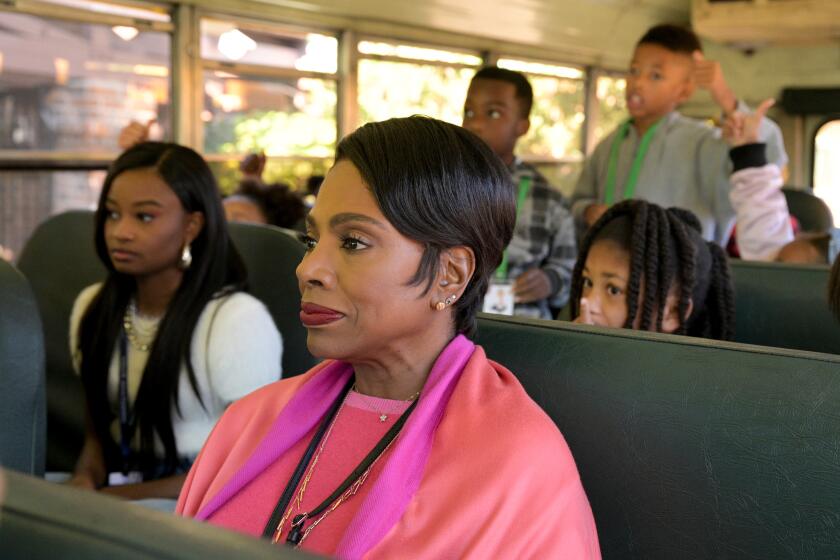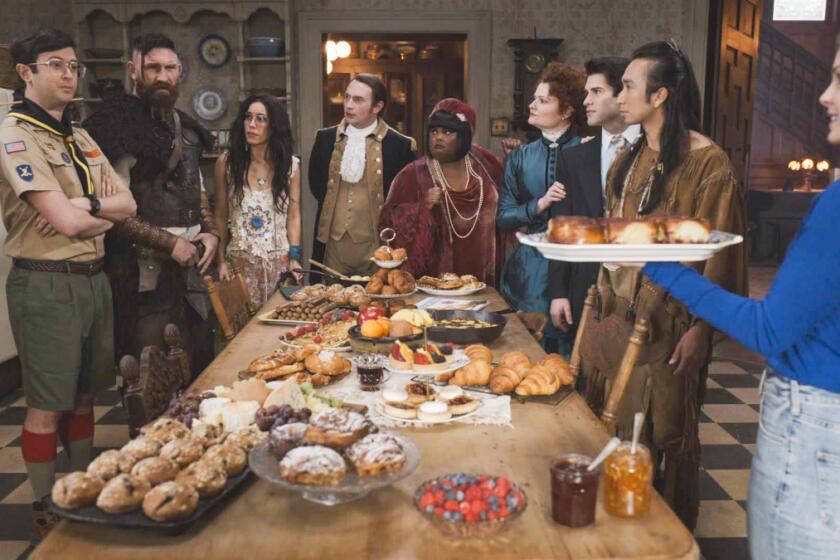How ‘Abbott Elementary’ ‘unwittingly’ became TV’s No. 1 school for Black child actors
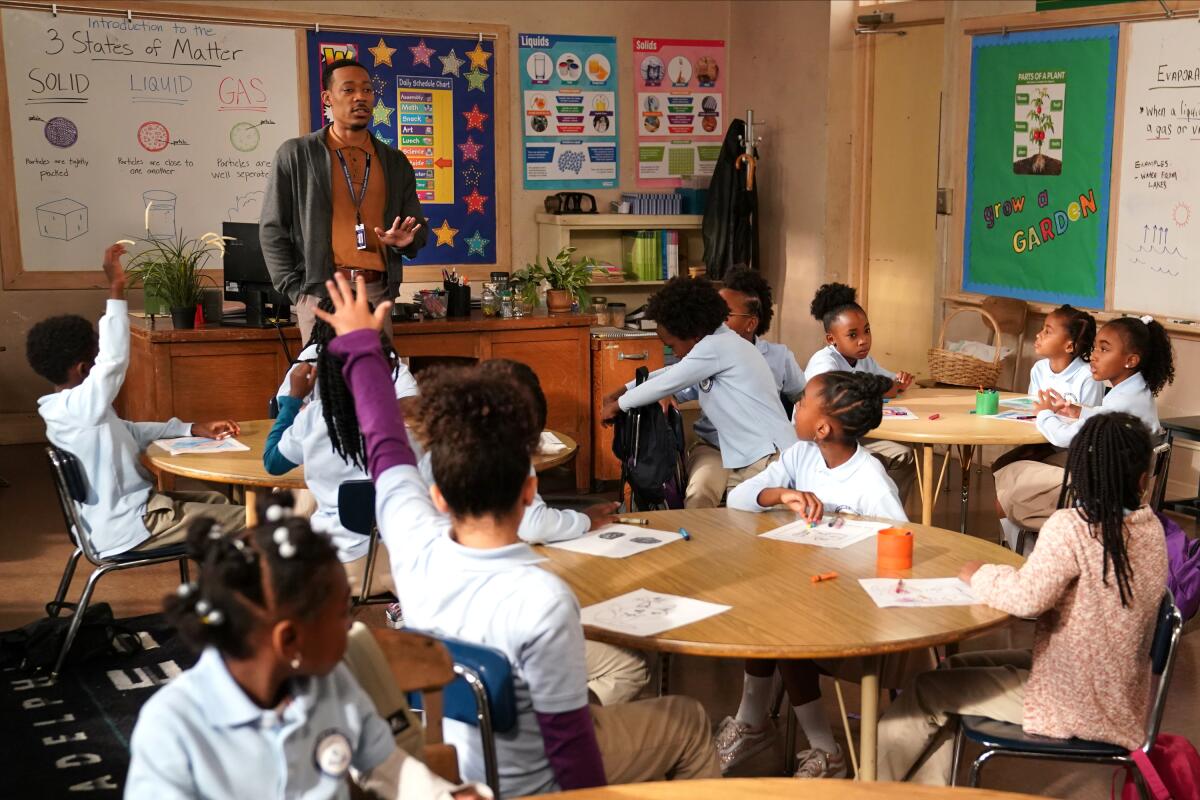
- Share via
In 2021, before “Abbott Elementary” creator-star Quinta Brunson had filmed a single scene as second-grade teacher Janine Teagues, she was already comfortable in her instructor’s hat. Confronted with the task of finding roughly 80 child actors to sit behind desks in grades K-8, Brunson was presented with scores of possibilities, only to discover a more multicultural group than she expected. “I was like, ‘I think you guys misunderstood me,’” says Brunson, who modeled the ABC sitcom after the underfunded public school in West Philadelphia where her mother taught kindergarten for 40 years. “I had to be very specific. I said, ‘Black children,’ not mixed, not Hispanic, not Asian. It needed to mirror an environment in Philadelphia.”
Eventually, an understanding was reached. In addition to recognizing Brunson’s writing and supporting actress Sheryl Lee Ralph, Emmy voters honored casting director Wendy O’Brien, who had to populate the classrooms with not only the right teachers, but also with some of the kids who’d bring “Abbott” its air of noisy public-school authenticity.
Early on, Brunson and supervising producer Randall Einhorn, who directed the pilot, agreed on a key point about child casting: They weren’t in the market for wisecracking, camera-adept mini-performers with an impressive list of IMDb credits. Because “Abbott” would be shot mockumentary-style, a moment in which a grade-schooler answered a teacher’s question or declined a proffered slice of rubbery cafeteria pizza dictated a different way of delivering lines.
“We were very mindful that we wanted to work with kids who did not have too much experience,” says Einhorn. “When young kids have worked in television, a lot of the work they’re doing is either Nickelodeon or Disney. You can feel that. They might hit the joke harder. But it comes off as cuter. We were after more authentic performances. They just need to play it real.”
The ‘Abbott Elementary’ star opens up about her ‘rough’ path as a Black woman in show business — and now, at 65, enjoying the view from the top.
Of course, it was no simple task satisfying Brunson and Einhorn’s request during a pandemic, when strategies like sending out associates to search for talent in the umpteenth school production of “Annie” weren’t an option.
“It was definitely learn-on-the-go,” says O’Brien, who contacted theatrical training centers such as Youth Academy of Dramatic Arts and posted on online casting sites like Actors Access. She also found success with working actor parents whose offspring were attracted to the family business.
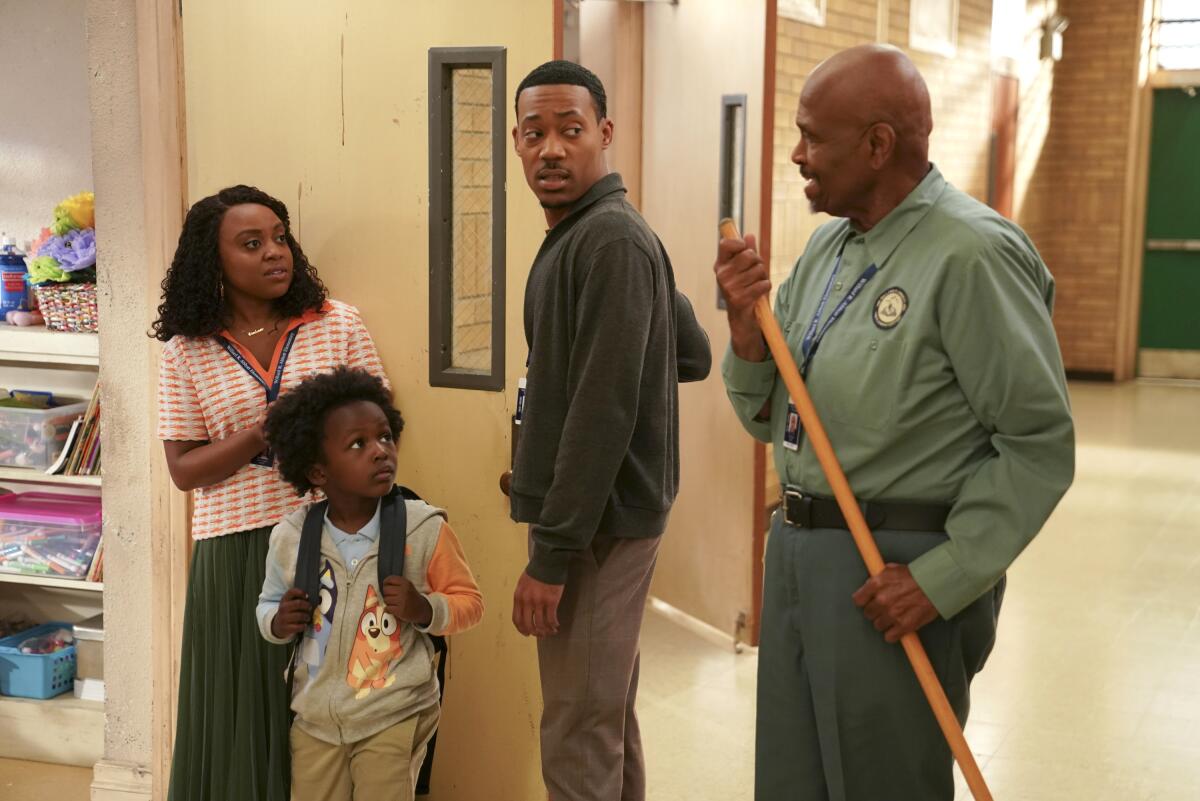
Aside from the age range — roughly 5 to 14 — O’Brien put it out there that the only requirements were that the applicant be outgoing and interested in the arts. “We’ve had children with learning disabilities, physical disabilities,” says O’Brien. “We’ve tried to see and represent everybody we can.” Also, for the most part, moms and dads are unseen on “Abbott.” “[The child’s] look can be anything. Older, different, goofy. We’re not trying to match parents, so we can have a lot more fun.”
Another wrinkle caused by COVID: Tryouts were virtual-only. This meant robbing O’Brien of assessing the scariest part of hiring actors as young as 5 years old: making sure a talented kid is right because a natural love of entertaining is there, and not because a pushy adult is foisting showbiz on a reluctant child.
“Traditionally the vetting process is of the parents too. Coming into the audition room and leaving is when you can tell when the kids don’t want to be there,” says O’Brien. “Not doing in person you lose a lot of that tactile filtering. So it’s been much more challenging for sure. There’s a little bit of crossing your fingers and hoping they’re as good on tape as they seem.”
The complete guide to home viewing
Get Screen Gab for everything about the TV shows and streaming movies everyone’s talking about.
You may occasionally receive promotional content from the Los Angeles Times.
Brunson’s granularity about what it would take to establish the vibe of an inner-city public school extended to the youngsters with no lines at all who fill the classrooms, roam the corridors and sit on school buses. Initially, extras casting director Jessie Vanatta thought rounding up a bunch of kids would be a no-brainer.
Then she began to realize the unique contours of the situation. On other shows, little extras might show up for a few days, then never be seen again. On “Abbott,” they often work up to three days a week all season long. “We realized that we needed not just a group of 20 kids, but the same group of the same 20 kids,” says Vanatta, adding that while the pool of child actors with valid work permits interested in appearing on a brand-new, unknown show wasn’t big, even smaller was the number of Black child actors who had work permits to begin with. “It became very clear, very quickly that we had to find a way to make this work.”
As with O’Brien, the pandemic forced Vanatta to abandon time-tested techniques like organizing enormous open casting calls that could be promoted on local TV and radio stations. Instead, she threw out a big net, spreading the word on casting websites and calling up management companies that specialize in representing extras who are minors. Referrals of brothers, sisters, cousins and friends turned out to be an unexpected gold mine. “We have two families where all five siblings work for us,” says Vanatta.
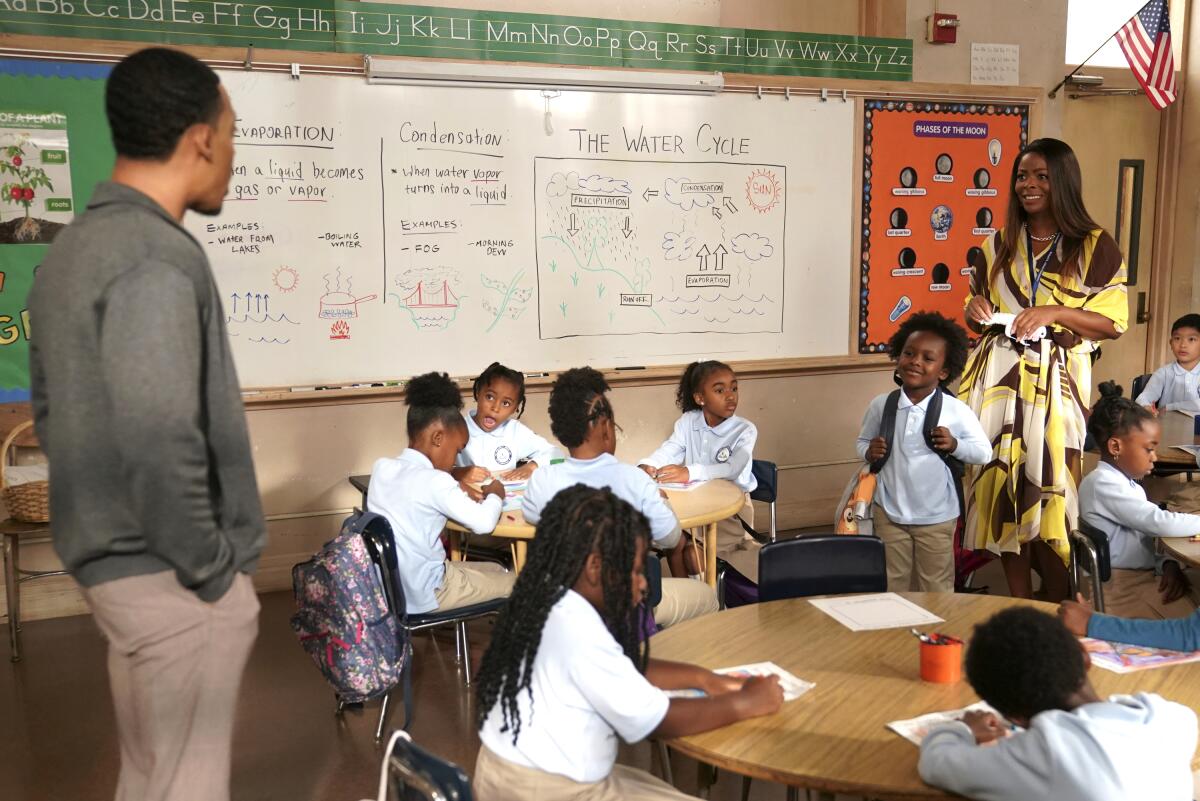
Her pitch to responding parents was the offer of a regular spot on a feel-good show with a pay rate of $182 for an eight-hour day. There were on-set schoolteachers, she would add, so that a student didn’t have to skip a day of class. Then she’d put the carrot at the end of the stick. The show’s renewal, which “Abbott” secured in March, meant job security. “If someone played a second-grader, then [in Season 2] we’d have them playing a third-grader,” says Vanatta. “I said, ‘It’s a great opportunity for kids who are interested in acting because they have the opportunity to either be bumped up or seen in a possible speaking role.’”
The pitch may have sounded like an exaggerated appeal to fill an immediate casting need, but it bore out. For Season 2, roughly 70% of the pint-sized cast returned. Only this time around, they’d clearly absorbed the jargon and protocol of a working television production. Says Einhorn, “When we say, ‘Quiet please. Everybody quiet please,’ I see some of those kids turning around to their peers and saying, ‘You need to be quiet, man. Why are you talking?’ It’s great.”
The It Takes a Village comedy is one of broadcast television’s most reliable forms. And we may need its comforts now more than ever.
According to O’Brien, even the video submissions or “self-tapes” have shown sharp improvement. “I think the adults were having trouble self-taping early on,” she says. “Maybe parents are putting up cue cards or maybe they’re more comfortable with the technology. But by and large, it’s more professional this year. You can hear people better.”
It’s not lost on Brunson that “Abbott” has become a sort of on-the-job, paid training center for Black child actors — “unwittingly,” she adds. “We just needed a certain background that was not easy to get.” Be that as it may, extras on “Abbott” are encouraged to try out for parts with dialogue, says Brunson, and stars are occasionally born.
Last season, for example, Abraham Muhammad became Einhorn’s go-to extra for performing physical bits. When he showed up on set for Season 2, Einhorn was thrilled. “He was such an unexpected talent,” says Einhorn. “A diamond in the rough.” The other day, the 9-year-old approached the director and asked, “What do I need to do to prove to you that I can handle a line on your show?” Einhorn was instantly conflicted. “What was going on in my head was, ‘If I give you a line, you’ll be paid much more money, but you’ll lose your day job.’ I’m very mindful that kids who get upgraded to a speaking role are not going to be a part of the background family again.” Honoring a kid’s ambition won out. “I can’t wait until we give him his first scene. I know he’s going to kill it.”
Then there is the case of Masen Pinnock, an extra in Brunson’s class in Season 1 who she remembers little else about except, for a then-7-year-old, he was remarkably subdued. Yet he landed a large speaking role in the sixth episode this season. “He was quiet, so quiet. Then I saw his audition, and I was like, ‘I’ve never seen this kid talk this much,’ and he was incredible,” says Brunson. “There was no comparison. We were like, ‘We have to let him have this role.’ We don’t want to lose them, but we never want to deny them the opportunity.”
‘Abbott Elementary’
Where: ABC
When: 9 p.m. Wednesday
Rated: TV-PG (may be unsuitable for young children)
More to Read
The complete guide to home viewing
Get Screen Gab for everything about the TV shows and streaming movies everyone’s talking about.
You may occasionally receive promotional content from the Los Angeles Times.
